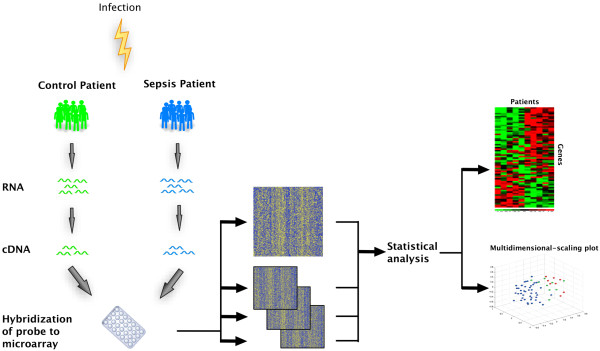Figure 3.

DNA microarrays in gene expression analysis. DNA microarrays consist of minuscule amounts of hundreds or thousands of gene sequences on a single microscopic plate. To determine which genes are turned on or off in a cell, mRNA is extracted from whole blood or tissues. This mRNA is then labeled using an enzyme to generate a complementary cDNA from mRNA. During this process, fluorescent nucleotides are attached to the cDNA. The sepsis and the control samples are labeled with different fluorescent dyes. The labeled cDNA is placed on the DNA microarray plate. When a given mRNA and its cDNA are present, they bind to the each other, leaving a fluorescent tag. The intensity of this fluorescence indicates how many mRNA have bound to the cDNA. If a particular gene is very active, it produces many copies of mRNA, thus more labeled cDNA will bind to the DNA on the microarray plate and generate a very bright fluorescent area. If there is no fluorescence, then none of the mRNA bound to the DNA, indicating that the gene is inactive.
